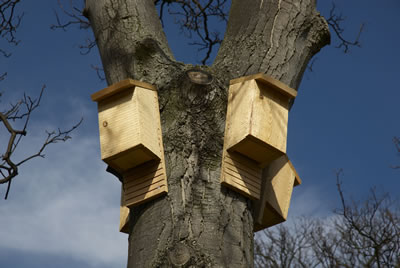Phase 1 Habitat Survey: assessing potential environmental impact
A Phase 1 Habitat Survey, as part of a Preliminary Ecological Appraisal, is useful to developers in the early stages of a project. We carry out the appraisal in three stages – desk study, Phase 1 habitat survey and finally a report which will assist in planning and budgeting for the project as a whole.
Stage 1– Desk study
A desk study is normally the first element of a Preliminary Ecological Appraisal (PEA) since it indicates the kinds of habitats and protected species that could be present on or adjacent to the site and which might be affected by a development. It is an essential element of almost all ecological appraisal work and is the starting point for decision-making regarding the types of specialist environmental surveys that could be needed in support of a future planning application.
A desk study normally involves a formal request to a data provider (such as a local records centre or bat group) or it may simply involve a web-based search for publically available archive information on important habitats, protected species and protected sites, on websites such as www.magic.gov.uk.
Stage 2– Phase 1 habitat survey
The next stage of ecological survey on a potential development site is often a walkover / mapping exercise using Phase 1 habitat survey techniques.In addition to gathering data for later conversion using GIS to a map for inclusion in a report, we would examine habitats at this stage for their potential to support species listed in Section 41 of the NERC Act. We would also search for field signs of protected or notable species that could potentially constrain development (e.g. badgers).
We recommend that Phase 1 habitat surveys are commissioned as early as possible in the life cycle of a project, since any subsequent specialist field work that might be needed can be seasonally constrained - an early start can make the difference between a timely planning submission and a delay.
Of course, if a site is deemed to have low or negligible wildlife interest, then no further survey work may be needed.
Stage 3 – Reporting
A Preliminary Ecological Appraisal report has a number of purposes in respect to planning:- it provides an opportunity for the ecologist to describe existing conditions on site and to assess the potential for protected / notable species to occur;
- the potential impacts of a development can be explored and any obvious constraints identified;
- recommendations can be made at this stage about the kinds of specialist surveys that may be needed in support of a future planning application; and
- opportunities for potential mitigation and enhancement can be explored
A Preliminary Ecological Appraisal is potentially very useful for developers since it feeds into the early stages of master planning, can assist with the emerging scheme design and can enable clients to more accurately estimate project costs.
Following completion of the Preliminary Ecological Appraisal report we normally advise developers to enter into early discussions with planning authorities about the kinds of specialist surveys that might be needed prior to their planning submission and also what might be acceptable in respect of potential impacts as a result of the envisaged scheme design.
Link to the CIEEM Guidelines for Preliminary Ecological Appraisal:
http://www.cieem.net/data/files/Resource_Library/Technical_Guidance_Series/GPEA/GPEA_April_2013.pdf

